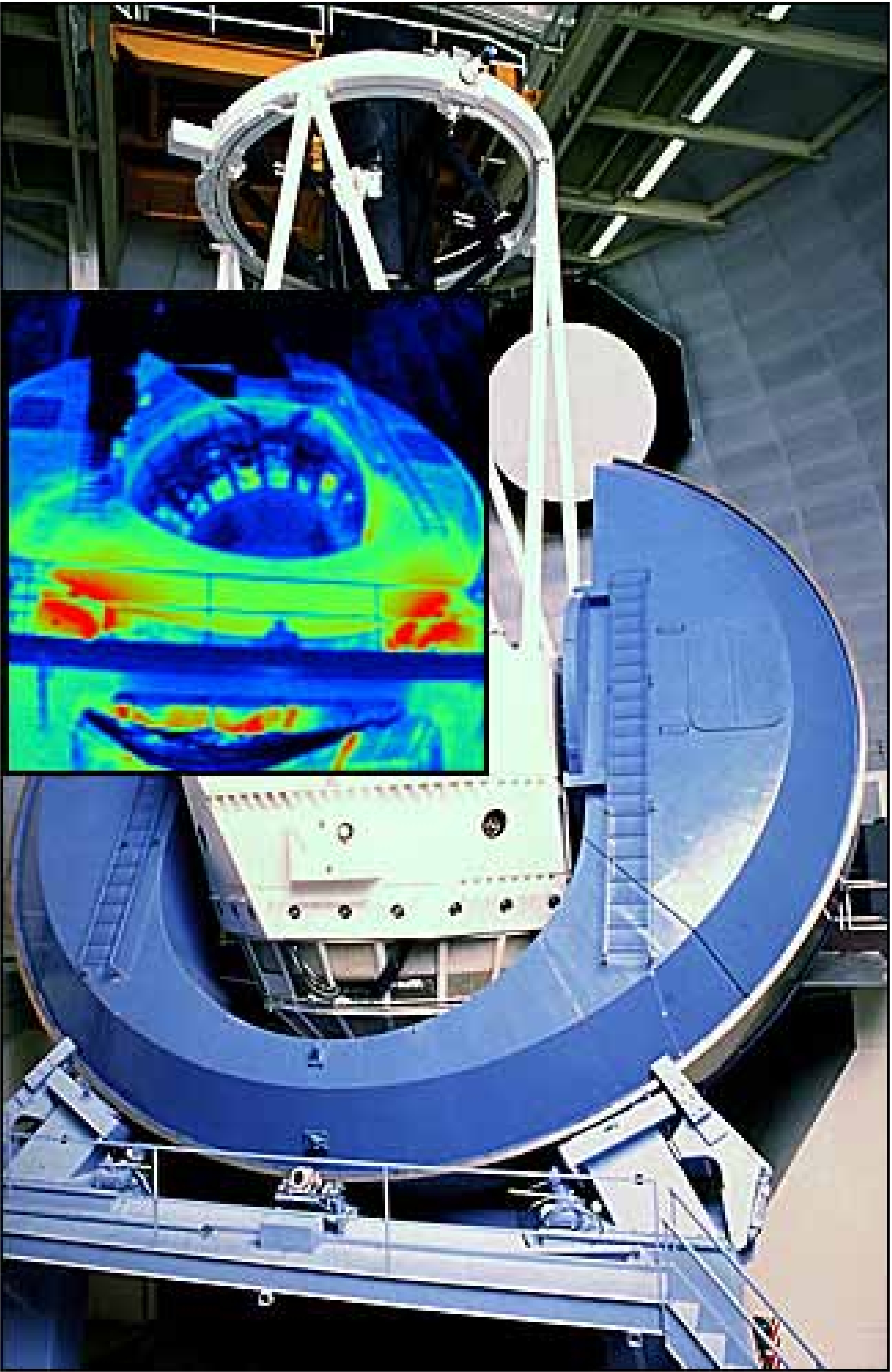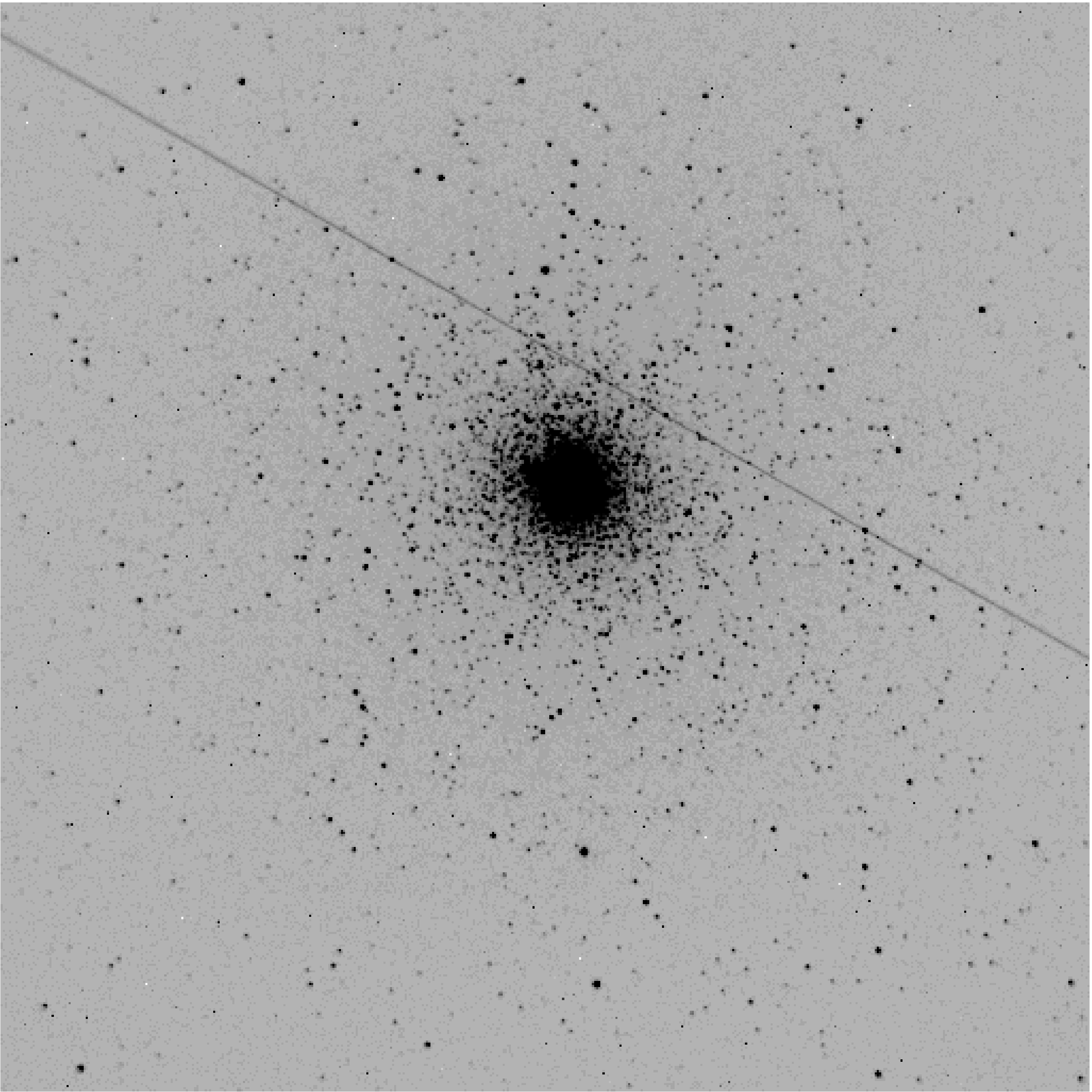



| Part 2: |
Earth's Atmosphere and Extraneous Radiation:
Not all photons emitted by astronomical objects are detected by ground-based telescopes. A major barrier to the photons path is the Earth's ionosphere and upper atmosphere that absorbs or scatters most incoming radiation except for the optical (wavelengths of 3300-8000 Å where 1 Å = 10-10 m), parts of the Near-IR (0.8 - 7 µm) and radio (greater than 1 mm) regions. Absorption greatly affects radiation with the shortest wavelengths. In general, Gamma rays are absorbed by atomic nuclei, X-rays by individual atoms and UV radiation by molecules. Incoming IR and submillimeter radiation are strongly absorbed by molecules in the upper atmosphere (e.g. H2O and carbon monoxide, CO). Observations in these regions greatly benefit by locating telescopes at high altitude. Mountain top sites like Mauna Kea (altitude 4200 m) in Hawaii, Cerro Pachon (2700 m), Las Campanas (2500 m) and Paranal (2600 m) in Chile, La Palma (2300 m) in the Canary Islands are used to decrease the blocking effect of the atmosphere. The Antarctic, in particular the South Pole, provides an atmosphere with low water vapor content. Most of the continent is at high altitude, with the South Pole 2,835 m above sea level, again helping to reduce the amount of obscuring atmosphere. The Antarctic has therefore also become a very useful IR and submillimeter site.
The transmission properties of the Earth's atmosphere (above) has prompted the exploration of Gamma ray, X-ray, UV, Mid- and Far-IR regions of the electromagnetic spectrum via satellite and high-altitude balloon observations. Satellite observations in the optical (e.g. Hubble Space Telescope) have benefited from being above the majority of the atmosphere allowing near-diffraction limited observations. Radio astronomy satellites have benefited from large distance instrumental baselines. HALCA (Highly Advanced Laboratory for Communications and Astronomy), known as Haruka after launch, operated from 1997 to 2003. It was an 8 m diameter radio telescope used for Very Long Baseline Interferometry. An elliptical orbit (21,400 by 560 km) allowed imaging by the satellite and ground based telescopes, with good (u,v) plane coverage and high resolution. In late 1998 the Balloon Observations of Millimetric Extragalactic Radiation and Geophysics experiment (BOOMERANG), observed the sky at millimeter wavelengths for about ten days. Future space interferometry missions include ESAs Darwin mission and NASAs Terrestrial Planet Finder, both in mission concept stages of planning.
Emission from the night sky plays an important part in observational astronomy and seriously affects our ability to detect faint objects. Reactions in the upper atmosphere that result in radiation are known as airglow or nightglow. Electrons recombining with ions (e.g. O, Na, O2, OH) at typical altitudes of 100 km can radiate in the Ultraviolet, optical and Near-IR regions. The emission is usually measured in Rayleighs where
1 Rayleigh = 106 photons cm-2 s-1 sr-1
and sr is steradian1. For example, at 762 nm the emission from O2 is ~6000 Rayleigh.
The interaction of the solar wind with the Earth's magnetic field results in polar aurorae, usually close to the geomagnetic poles. Dust grains in the plane of the Solar System scatter sunlight causing zodiacal light. The Sun and the Moon are major contributors to night sky brightness. The influence of the Moon is easy to witness if you compare the night sky brightness at both Full and New Moon. Optical observations that aim to detect very faint objects are usually scheduled during dark skies, close to New Moon.

Figure 2.2: The main image shows the Mayall 4 m telescope at Kitt Peak National Observatory in visual light. The insert shows the horseshoe mount at 10 µm taken with a thermal video camera. Hot oil lubricated bearings that support the mount appear as bright red. Credit: National Optical Astronomy Observatory, M. Hanna, G. Jacoby.
Other extraneous radiation sources are also present. Ground-based Near-IR observations are plagued by background heat radiation from the telescope (e.g. mirrors) and structure (e.g. oil lubricated bearing of horseshoe mounts; see Figure 2.2). The insert image at a wavelength of 10 µm shows temperature changes represented by color differences. Oil lubricated bearings that support the horseshoe mount appear in the infrared image as bright red, representing a 15° C increase in temperature above surrounding structures.
This nuisance radiation can be minimized by cooling and reducing the surface area along the optical path of instruments. The Near-IR background sky is also very bright and highly variable on short time scales. Observations from the excellent ground-based IR sites of the Antarctic, Chile and Mauna Kea can help minimize such fluctuations, yet satellite observations offer the best IR observing conditions.

Figure 2.3: Globular cluster NGC104 (47 Tuc) and satellite trail. A 30 second exposure, 30' across. Credit: A. Mattingly, Grove Creek Observatory.
Human activity produces spurious radiation sources that can affect astronomical observations. These include microwave and radio emission from industrial and telecommunication sources. In the optical region night-time outdoor lighting and general city and suburban lights have all put additional pressure on the quality of observations. Finally, whilst satellites have allowed us to make observations across the entire electromagnetic region, they too are sources of increasing 'pollution' for ground-based observations, when recorded as streaks of light across long exposure wide-field images near to, or through (see Figure 2.3) objects of interest. Of July, 2009 there were ~900 operational satellites, with ~1500 objects greater than 100 kg in mass in orbit, and 19,000 objects in orbit with diameters > 10 cm.
[...]
1Steradian is a unit of solid angle. A sphere measures 4  or ~12.56637 steradians.
or ~12.56637 steradians.